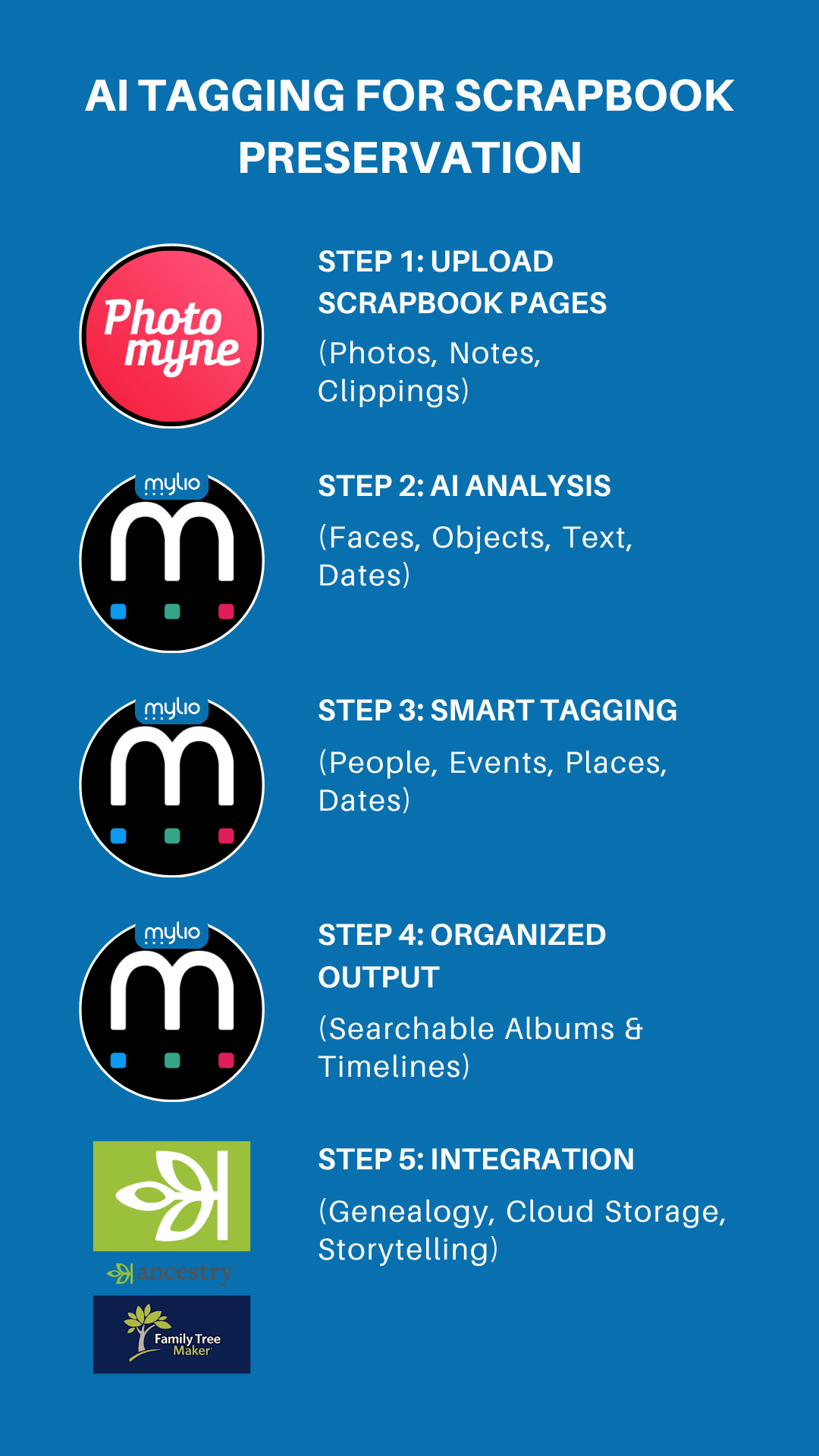
Use an AI Tagging Pipeline for Memories Organization
How AI Tagging Can Supercharge Your Photo and Scrapbook Preservation
Hey friends! Mike here.
If you're like me, you’ve got shelves (or maybe even boxes) of family memories—beautiful, oversized albums full of stories, smiles, and sepia-toned photos. Perhaps you have old newspapers or documents. The trouble is, digitizing the full pages of these items, while keeping their full charm and data, can be tricky.
Today, I want to share a quick walkthrough of something I call an AI tagging pipeline—and how it can make preserving these treasures easier, smarter, and even kind of fun.

Step 1: Capture Every Detail—Borders and All (with Photomyne)
Most photo scanning apps crop everything down to just the photo. That’s fine for standard snapshots—but what about those with info written in the border? Or scrapbook pages with captions and clippings? Old newspapers?
You want the whole page, borders and all.
That’s where Photomyne’s scrapbook feature comes in. It captures the entire layout, giving you a digital replica of your original design. I recently used this to digitize some oversized documents, and it worked beautifully.
Steps 2–4: Let Mylio Do the Heavy Lifting
Once the scrapbook pages are uploaded, I feed them into Mylio—a tool I talk about a lot because it’s that good.
Mylio handles the behind-the-scenes work:
AI analysis detects faces, objects, text, and dates
It automatically tags people (if they’re already identified in your library)
It recognizes scenes—beach trips, mountain hikes, reunions—and makes them searchable
Want to see every family photo taken at the ocean in the 1950s? Just type it in.
Then comes the fun part: organizing.
Create albums by decade, event, person, place—you name it. I’ve got albums for everything from motorcycle trips to college reunions.
Step 5: Sync with Your Genealogy Software
Here’s where it all connects. Anything genealogy-related? I drop the info and pictures into Family Tree Maker. Since it syncs with Ancestry.com, everything flows automatically between platforms.
Now, you might be asking, “Why use both?”
Great question.
Ancestry is fantastic for building and connecting trees online. But Family Tree Maker—at least in my opinion—offers better ways to present your research:
Beautiful charts
Family history books
Interactive presentations
It’s a powerful way to share your story in a visually compelling way.
So that’s what I call an AI tagging pipeline—five simple steps to turn those treasured, fragile scrapbooks into searchable, shareable family history gold.
Give it a try, and as always, let me know how it works for you. You can find more tips like this right here on the blog or reach out through MyLegacyCloud.com.
Let’s keep those stories alive,
—Mike
